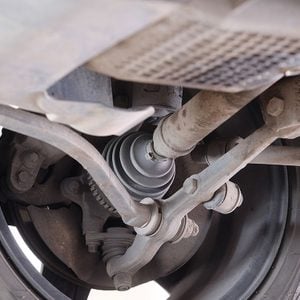
1. One of the most important facts about language-learning is this: Don’t place a timer on learning a new language. “It’s like learning a new skill,” says Safieh Moghaddam, the associate chair of linguistics and languages at the University of Toronto. There’s no set amount of hours for mastering a language—and the learning process will vary for everyone.
2. Language learning apps are more popular than ever. According to data compiled by free language app Duolingo, more than 30 million people attempted to learn a new language in the United States in 2020.
3. Learn cognates first. These are words that look and mean the same thing as words you already know—for instance, historia in Spanish or bruder in German. “This may help the learner gain confidence and think that learning a new language is not that challenging,” says Moghaddam.
4. Choose outlets that spark your interest. Studies have found that individuals who frequently watch foreign films or television shows are typically better at reading, listening and learning vocabulary. Subtitles allow you to see and hear each spoken word.
5. Learning a new language is all about listening. You must first expose your mind to a language without deliberately trying to learn it, says Steve Kauffman, polyglot and co-founder of the online learning language tool LingQ. As a result, more than 70 per cent of your learning time should be devoted to listening and reading.
6. Come up with real-life scenarios and practice hypothetical conversations during the learning process. “You have no control over what the native speaker is going to say back to you,” says Kauffman, so be prepared for different conversation outcomes.
7. For native English speakers, Spanish is one of the easiest languages to learn. More than 450 million people in the world speak it, making it the second-most spoken language on Earth.
8. The two most difficult languages to learn are Mandarin Chinese and Arabic. Mandarin has thousands of characters and includes four tones, meaning words can be pronounced in four different ways. Arabic, meanwhile, includes sounds that don’t exist in the English language.
9. The best way to stay motivated is to take a break and regroup when you’re ready. During your break, track the progress you’ve made and take time to reflect on areas of improvement. A lack of motivation could also mean you need to change your studying style, says Moghaddam.
10. Don’t be discouraged by mistakes. In fact, mistakes can actually make you smarter because you’re less likely to make the same error twice. Naturally, the brain is a slow learner, and the mindset of mastering a skill quickly is counterproductive, says Kauffman.
Now that you know these facts about language-learning, discover the best way to make new friends as an adult.
Harsh winter conditions may cause your vehicle’s fluids to quickly break down. Spring is the perfect time to check those fluids and determine if they need to be topped off, changed or flushed.
Check all fluid levels while your car is on level ground. Vehicle fluids come in a rainbow of colours; all should be translucent and free from rust, dirt, sludge and debris. Use a clean white paper towel when checking fluids to see if they are dirty and need to be changed, or contaminated and need to be flushed.
Take care not to overfill fluids and only use new fluids from unopened bottles. (Spring is an excellent time to bring open fluid bottles to your local recycling centre.) A funnel may make it easier to add fluids, but be sure it’s completely clean and free of dust, grime or other fluids. Check the owner’s manual to locate fluid reservoirs, the correct fluid types and fluid level specifications for your vehicle’s make, model and year.
These are the fluids to check:
Motor Oil
If your engine oil is yellowish to light brown, but low, you can top it off with fresh oil from a sealed bottle. (Here’s the right way to pour oil.) However, if it’s thick, black or gritty, it’s time to change the oil and filter. Even if you didn’t drive a lot during the winter, spring is a good time to do this. Performing a DIY oil change following a bitterly cold winter can extend an engine’s life.
Windshield Washer Fluid
Remove the washer fluid reservoir cap and check for dirt or muck. Use a garden hose to flush the reservoir if necessary. Check the reservoir for leaks or cracks. Fill with premixed windshield washer fluid and test the washers (front and rear) to make sure they work properly.
Coolant
When the engine is cool, remove the radiator and coolant reservoir tank caps. If the coolant is clean, but low, add only a 50/50 mix of anti-freeze and water to the reservoir’s “Full Cold” mark. If the coolant is murky, or if there’s rust buildup in the radiator, the reservoir tank or under the radiator cap, your coolant system needs flushing. Flushing the coolant system is a simple DIY project.
Brake Fluid
Remove the master cylinder reservoir cap. The brake fluid should be a clear yellowish to light brown. If the fluid is dirty, or the reservoir cap gasket is mushy, it’s time to have your repair shop flush and replace the brake fluid and reservoir cap gasket. If the fluid is low, add only clean fresh fluid to the reservoir fill mark. If the brake fluid is really low, have your mechanic check for leaks.
Power Steering Fluid (PSF)
The power steering dipstick is usually connected to the reservoir cap. Some power steering reservoirs are transparent and have fluid level indicators on the outside.
Check the PSF level when the engine is cool. If low, fill only to the “Cold” full mark. Overfilling the PSF will cause the reservoir to leak when the fluid heats up. Black or dark-brown fluid should be flushed by your repair shop to prevent premature part failure. (Find out the surprising ways you’re shortening the life of your car.)
Automatic Transmission Fluid (ATF)
Check ATF fluid at operating temperature with the engine running. Remove the dipstick and wipe clean, then reinsert to check the fluid level. If the ATF is a light red/pinkish colour, but low, you can top it off with fresh ATF. If it’s deep red to dark brown, have your mechanic change the fluid and filter.
NMF Battery Fluid
Spring is the ideal time to check the battery fluid in non-maintenance-free batteries (NMF). If you have a NMF battery, check the water fluid levels and fill only with distilled water if low. (Here’s more advice on how to extend the life of your car battery.)
Note: Four-wheel, all-wheel drive (transfer case) and rear drive (differential case) vehicles have fluids that need to be checked from underneath the vehicle. You can DIY if you’re handy, or have a professional do it for you.
Next, check out the ultimate car maintenance schedule.
Rates of binge drinking are rising so steadily that the authors of a comprehensive 2017 study called it a public-health crisis. Around the world, women are binge drinking more, and more heavily. One study, published in Alcoholism, found that binge drinking among U.S. women over 60 is increasing by 3.7 per cent every year. Another found that the number of Canadian women who identified as binge drinkers doubled from 1996 to 2013. In Canada, affluent white people are imbibing in greater quantities, as are people living in rural areas.
Multiple factors contribute to the increase in binge drinking. Some doctors cite the stresses that come with a dismal economic and political climate, a culture of overwork, a rise in mental health issues and growing social isolation. And drinking is arguably the world’s most socially acceptable vice—a customary indulgence at big celebrations, restaurant dinners or just a regular night at home.
As drinking becomes not only a way to make merry but a way to cope with stress, it has been increasingly linked to parenthood. Terms like “grown-up grape juice,” “mommy drinking” and “using wine to cope with the whine” glibly offer parents permission to soothe the burn of sleep deprivation and anxiety with alcohol.
While those factors may explain an uptick in the number of people reaching for that first drink, it’s brain circuitry that’s likely responsible for bingeing behaviours. A drink puts stress on cells in the brain’s extended amygdala, and those cells release a stress hormone called corticotropin, which fires up the brain’s ventral-tegmental-area neurons.
In other words, the brain’s reward centre lights up and relays to its owner that taking another drink is a great idea because the more you consume, the greater the reward. And because alcohol overstimulates certain parts of the brain, you’re not as likely to consider its impact or to focus on anything other than the immediate task at hand: drinking. Your brain circuitry encourages you to crack another beer, even if a sober you would know that it’s time to stop.

Warning Signs of Binge Drinking
If you find yourself regularly drinking more than you intended, consider whether you’re in control of your habits.
You can’t remember things
During a night of heavy drinking, a brain messenger called glutamate is disrupted. Researchers think this is why excessive drinking suppresses our memories.
You can’t cut back
Your commitments to stay sober for a set period of time or to lessen your consumption don’t work.
Your friends and family have expressed concern
If those around you have suggested that you have a problem with binge drinking, consult your doctor.
Your drinking is affecting your job, relationships or finances
Examine the stresses in your life and consider whether alcohol is a common factor.
You’re causing harm to the people around you
If the consequences of your drinking are spilling over into the lives of your loved ones, it’s time to take serious stock of your alcohol consumption.
Now that you know the warning signs of binge drinking, read up on the dangers of binge drinking.








